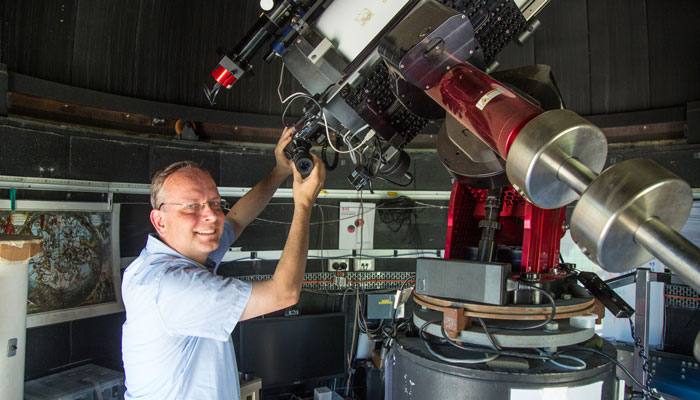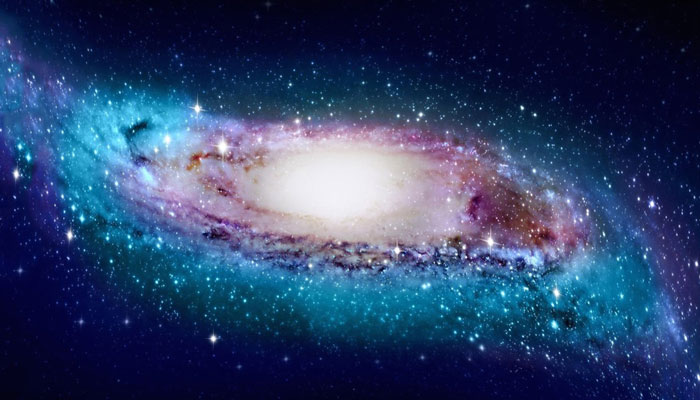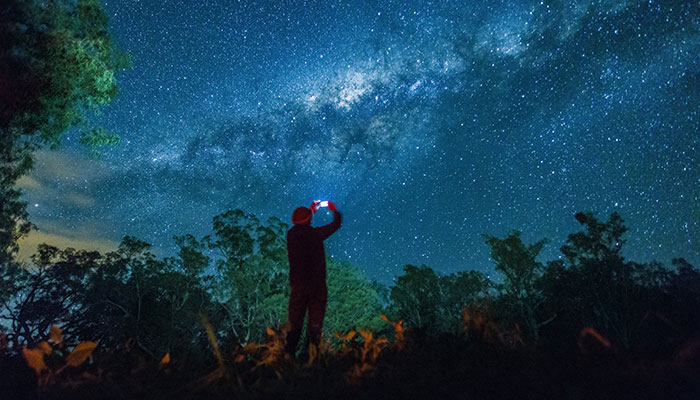The king of meteor showers, the fiery Geminids, are back for their annual show this month.
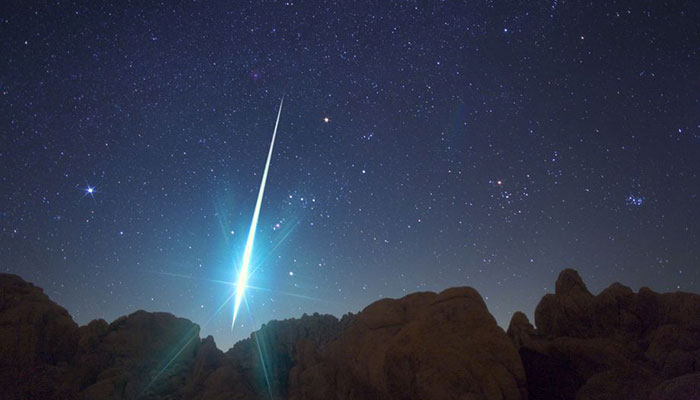
Look skyward: Star-gazers are in for a treat this month when the heavens put on a show, similar to this bright meteor seen during the Geminid meteor shower of 14 December 2009.
Their weekend appearance on Saturday, December 14, with peak viewing at 5.40am on Sunday, December 15, means you can make a weekend of it yourself, by grabbing some friends and heading far from city lights, for instance to a vantage point in a national park where there is an unimpeded view of the sky (but check for any bushfire warnings first!).
The show will bring more than 100 multi-coloured meteors per hour (at its peak), making it probably the best in the heavens.
There will be a full moon during the shower but the abundant bright meteors mean you will still see an average 20 to 40 meteors an hour despite the moon’s glare.
In NSW, the radiant will rise well before midnight giving stargazers the rest of the night to enjoy the prolific fiery performance, with the best viewing anytime after midnight.
The meteors will radiate from the northern horizon near the bright star Castor in the Gemini constellation but will appear anywhere in the sky.
Geminids’ unlikely parent is an asteroid
The interesting thing about these shooting stars is that you do not need any binoculars or telescopes – just give your eyes about 30 minutes to adjust to the night sky.
Geminids are slow-moving meteors with a speed of 20-35km/s and were first observed in 1862.
The parent of the Geminid is, unusually, an asteroid, 3200 Phaethon. Usually, meteor showers originate from a comet. But Geminids and Quadrantids are the major meteor showers with asteroids as parent bodies.
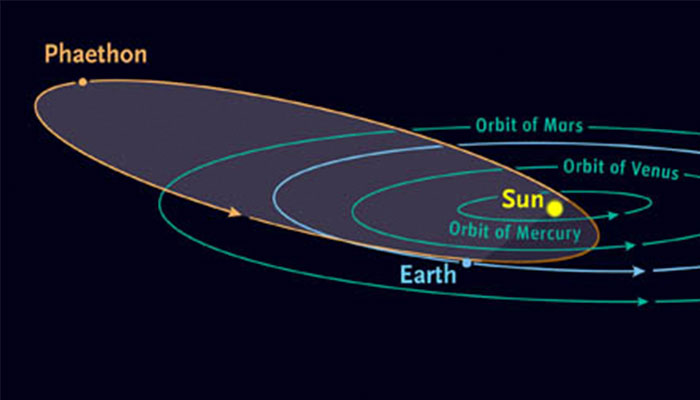
Planetary parent: Elongated, comet-like orbit of asteroid 3200 Phaethon. Image credit: Sky & Telescope.
Minor planets are called asteroids and large planets are called planetoids. Most of the asteroids live in the asteroid belt between the orbits of Mars and Jupiter.
- How museums can hook children for a lifetime of learning
- Digging up the dirt: are your vegies safe to eat?
- How the moon landing changed the world
Around 4.6 billion years ago, our solar system began to form from a big cloud of cold dust and gas. Some of the dust and gas condensed into planets while their leftovers turned into asteroids.
These asteroids are not round like planets and have irregular shapes. Their sizes vary from a few hundred kilometres to small pebbles. Asteroids could be made up of rocks, metals, or even clay.
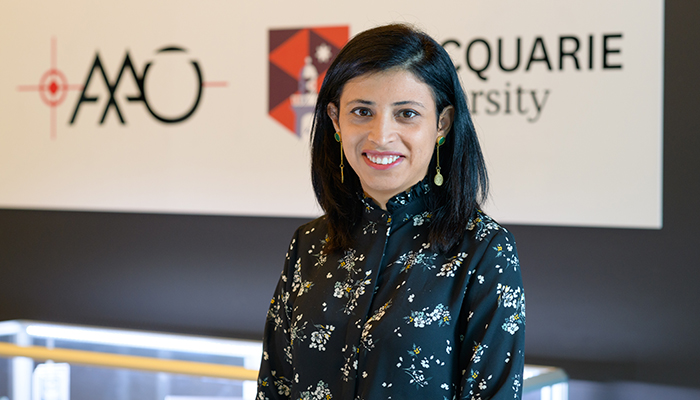
Stellar show: Dr Tayyaba Zafar says the best time to view the meteors in NSW is anytime after midnight.
3200 Phaethon is a rocky, near Earth asteroid of 5km width. It passes close to the Earth at a safe distance and orbits in an elongated path around the sun every 1.4 years (524 Earth days). This asteroid might have had a collision with some object in the past, which produced a stream of particles, and Earth runs through this debris every year.
You can track the Geminids in Sydney at the website here. And if you get a photo of the shower, share it with us at tayyaba.zafar@mq.edu.au
Dr Tayyaba Zafar works in the Australian Astronomical Optics team at Macquarie University.

